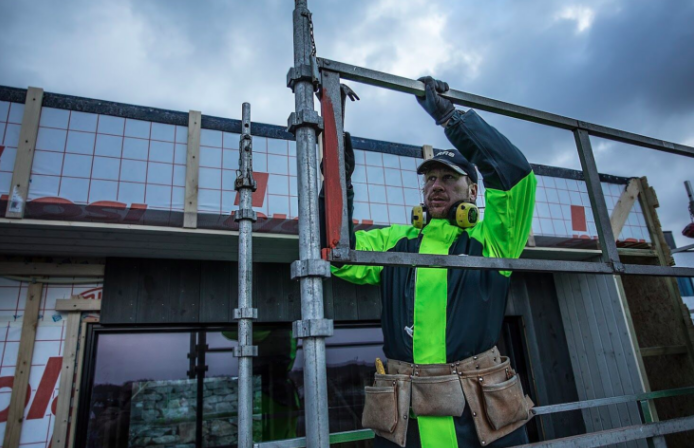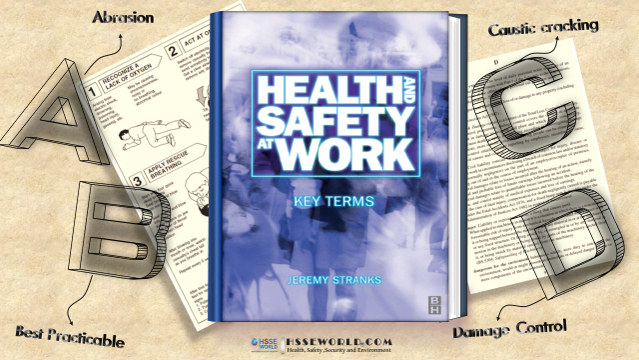Flame-resistant (FR) clothing is a critical element of a company’s personal protective arsenal. Cold weather is another hazard, and when it sets in, you need to know how to combine cold protection with the FR properties of your PPE.
No one would put a flammable coat over FR coveralls, just like they wouldn’t put flammable clothing under FR gear. A quick look at the stats on burns to the face, neck, wrists, hands, and ankles is enough to show you why that’s a bad idea. So, it’s important to know how to outfit your workers properly when they have to work in the cold.

[efsiconheading type=”h4″ style=”fi-lightbulb”]Note[/efsiconheading]The cold weather is a hazard that should be treated seriously, but it’s important not to compromise your workers’ FR protection when trying to keep workers warm and safe from the elements.
You will need to draft company policies and procedures for FR clothing that include making the transition from fall to winter. Your safety management system should also consider the whole supply chain. You need to be ready for the cold before it’s cold, and that means either having the stock on hand in all the right sizes or being able to access what you need with same-day delivery.
FR Clothing for Cold Weather
What makes FR cold weather clothing different? It’s all about the insulation value, the material’s ability to resist wind and moisture from the outside (without compromising the FR rating), retaining body heat, and wicking away or absorbing moisture from perspiration.
Layering for Warmth
Layering clothing is the best practice for working in cold environments, but it is absolutely critical that the base layers (those worn underneath the FR clothing) be non-melting. Depending on the task, they might need to be arc-rated as well.
Protection from Wet and Damp Conditions
It’s not just heat and insulation, however. Winter FR clothing also has to factor in the other weather and environmental conditions.
When our bridge construction team worked over an ocean inlet on Baffin Island in Nunavut, Canada, a nice winter day might hover around 32°F. That’s cold, but not cold enough to freeze the sea ice – that only happens when the temperatures hit 28.4°F or lower. So, everyone on site had to dress warm but also needed an outer shell that would protect them from fire, heat, wind, and damp.
Factoring in the Wind
The wind chill factor makes a big difference when it comes to keeping workers safe and comfortable.
A temperature of 40°F is cold. Now add a 20-mile-per-hour wind and you have a temperature that feels much colder. If you take a -5°F day and add that same wind speed, you have conditions that are cold enough to injure exposed skin very quickly and cause moderate to severe hypothermia.
Full Body Coverage
Please remember the face, head, hands, and feet when considering your FR cold weather clothing program.
FR flash hoods in balaclava style, for instance, provide protection from arc lash, flash fire, and thermal hazards. That makes them a great first layer of FR protection for work in cold climates.
Hazard Analysis and FR Selection
Your safety management system should direct any hazard analysis on FR clothing to the Federal, State, Provincial or Territorial legislation and regulations.
When conducting your hazard analysis, you will need to speak with manufacturers and suppliers about which FR clothing will be the best match for the job tasks performed by your employees, as well as the work environment.
Other Considerations
Cost, sizing, supply, and cleaning are key considerations when selecting any FR clothing. When you’re laying for warmth, you also need to make sure that the multiple layers can be worn without too much discomfort and without restricting the user’s movements.
Also keep in mind that you may actually require workers to have access to have multiple sets of FR outerwear and layered inner garments. If the temperatures change throughout the workday, they’ll need to be able to switch from warmer to lighter clothing. And if their clothing gets soaked or otherwise uncomfortable or compromised, having an additional set on hand will allow them to change and quickly return to work.
Final Thoughts
FR clothing is not expensive when you consider the cost of the alternative. Burns are one of the most painful, debilitating, disfiguring, and disabling injuries a worker can experience. Burns often require multiple surgeries, including reconstructive ones.
Likewise, frostbite, cold wind burn, trench foot, and hypothermia can all put a worker out of the game. On top of that, getting badly frostbitten means that the next cold exposure to that same area is made worse, even after the original cold exposure gets better.
Keep in mind that winter work often means work in low visibility conditions, whether due to shorter days or heavy snowfall.
And always include the workers who will have to work in the cold weather gear when purchasing your winter FR clothing. They will have insights from their own first-hand experience and they will thank you for soliciting their input.



